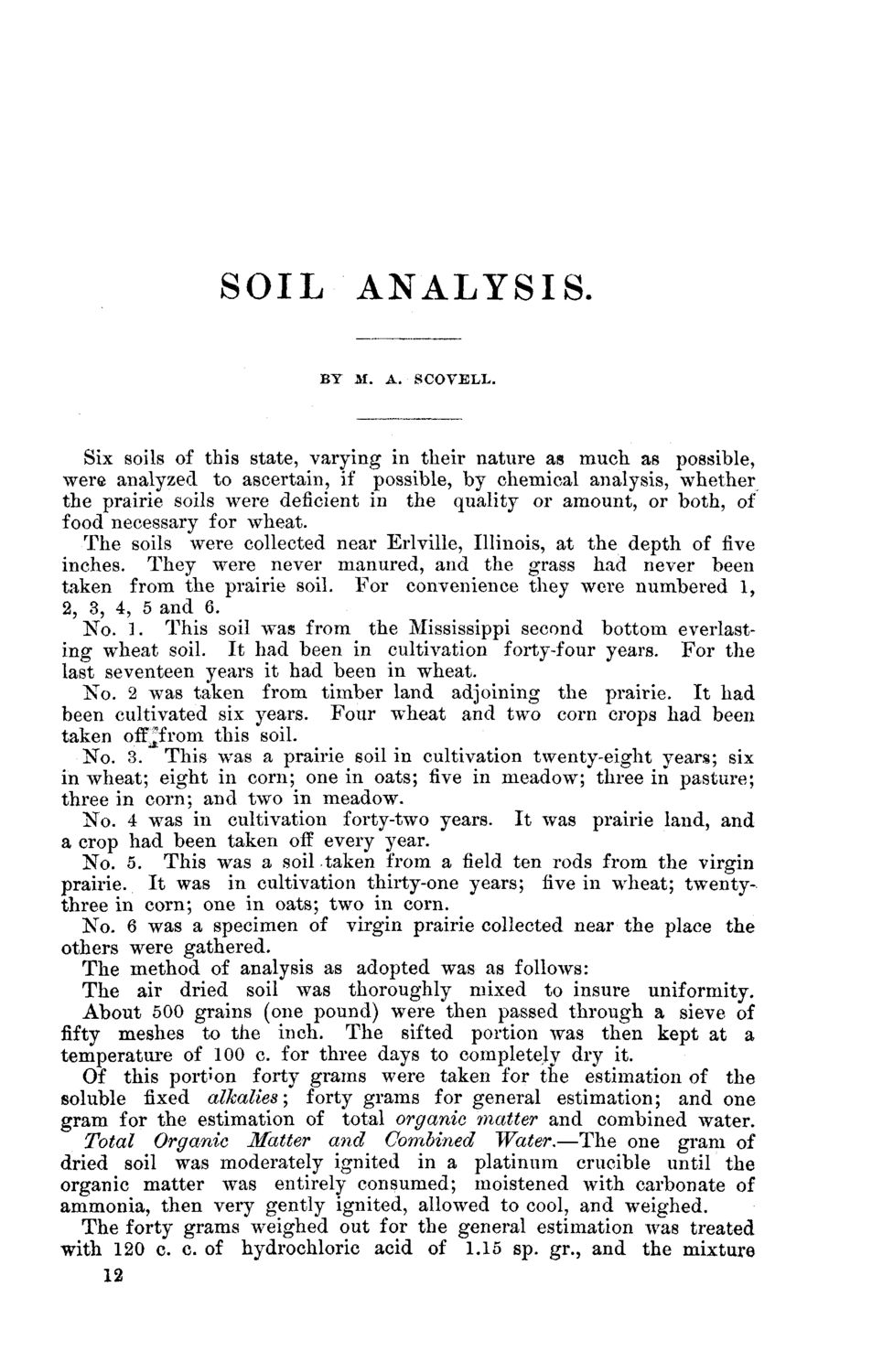| |
| |
Caption: Board of Trustees Minutes - 1878
This is a reduced-resolution page image for fast online browsing.

EXTRACTED TEXT FROM PAGE:
SOIL ANALYSIS. BY M. A. SC0VKLL. Six soils of this state, varying in their nature as much as possible, were analyzed to ascertain, if possible, by chemical analysis, whether the prairie soils were deficient in the quality or amount, or both, of food necessary for wheat. The soils were collected near Erlville, Illinois, at the depth of five inches. They were never manured, and the grass had never been taken from the prairie soil. For convenience they were numbered 1, 2, 3, 4, 5 and 6. No. 1. This soil was from the Mississippi second bottom everlasting wheat soil. I t had been in cultivation forty-four years. For the last seventeen years it had been in wheat. No. 2 was taken from timber land adjoining the prairie. I t had been cultivated six years. Four wheat and two corn crops had been taken offjfrom this soil. No. 3. This was a prairie soil in cultivation twenty-eight years; six in wheat; eight in corn; one in oats; five in meadow; three in pasture; three in corn; and two in meadow. No. 4 was in cultivation forty-two years. I t was prairie land, and a crop had been taken off every year. No. 5. This was a soil taken from a field ten rods from the virgin prairie. It was in cultivation thirty-one years; five in wheat; twentythree in corn; one in oats; two in corn. No. 6 was a specimen of virgin prairie collected near the place the others were gathered. The method of analysis as adopted was as follows: The air dried soil was thoroughly mixed to insure uniformity. About 500 grains (one pound) were then passed through a sieve of fifty meshes to the inch. The sifted portion was then kept at a temperature of 100 c. for three days to completely dry it. Of this portion forty grams were taken for the estimation of the soluble fixed alkalies; forty grams for general estimation; and one gram for the estimation of total organic matter and combined water. Total Organic Matter and Combined Water,—The one gram of dried soil was moderately ignited in a platinum crucible until the organic matter was entirely consumed; moistened with carbonate of ammonia, then very gently ignited, allowed to cool, and weighed. The forty grams weighed out for the general estimation was treated with 120 c. c. of hydrochloric acid of 1.15 sp. gr., and the mixture 12
| |